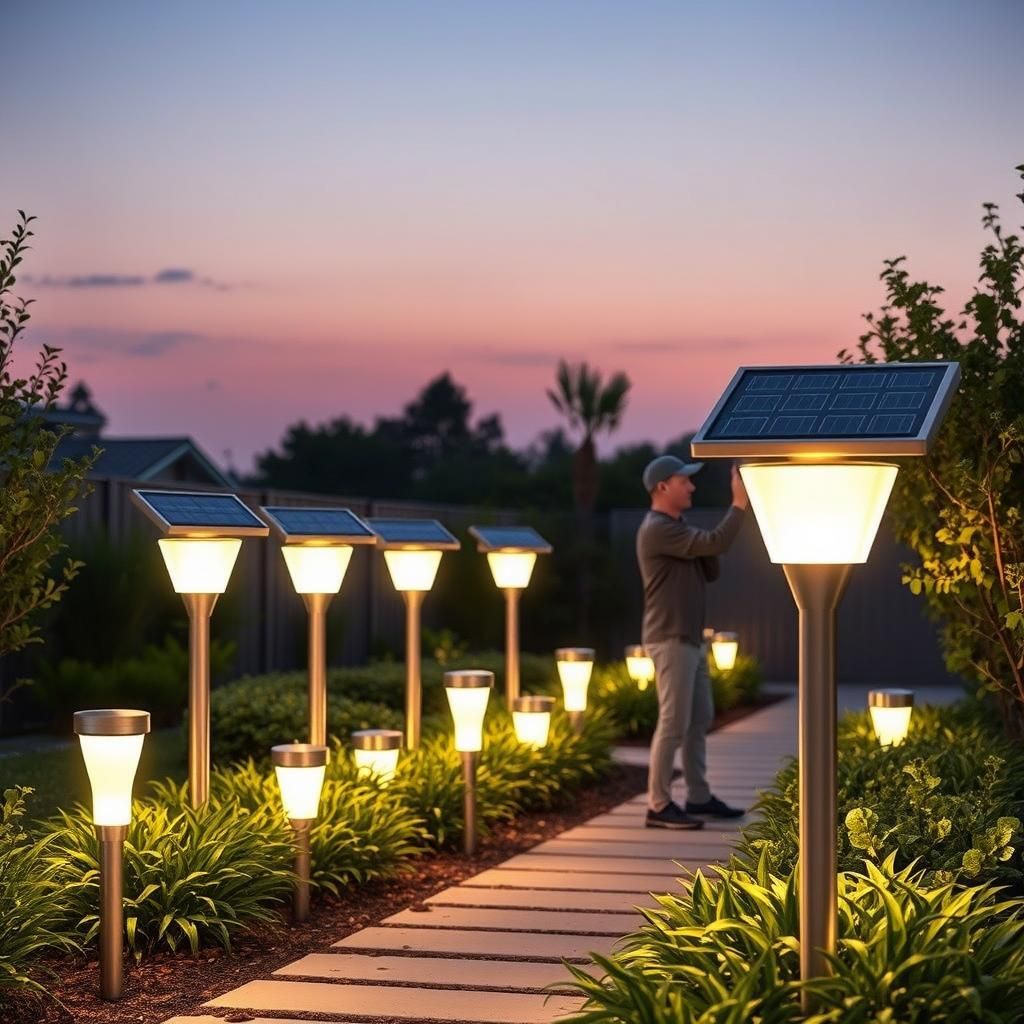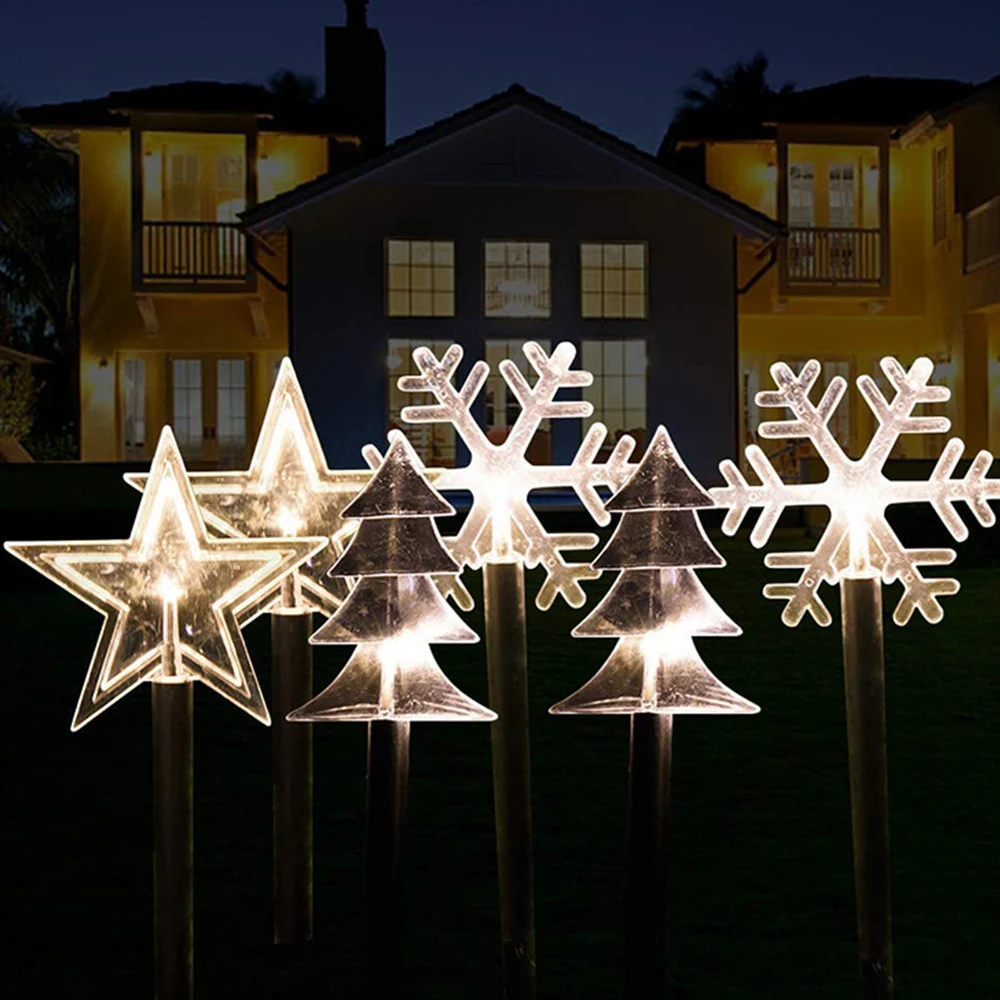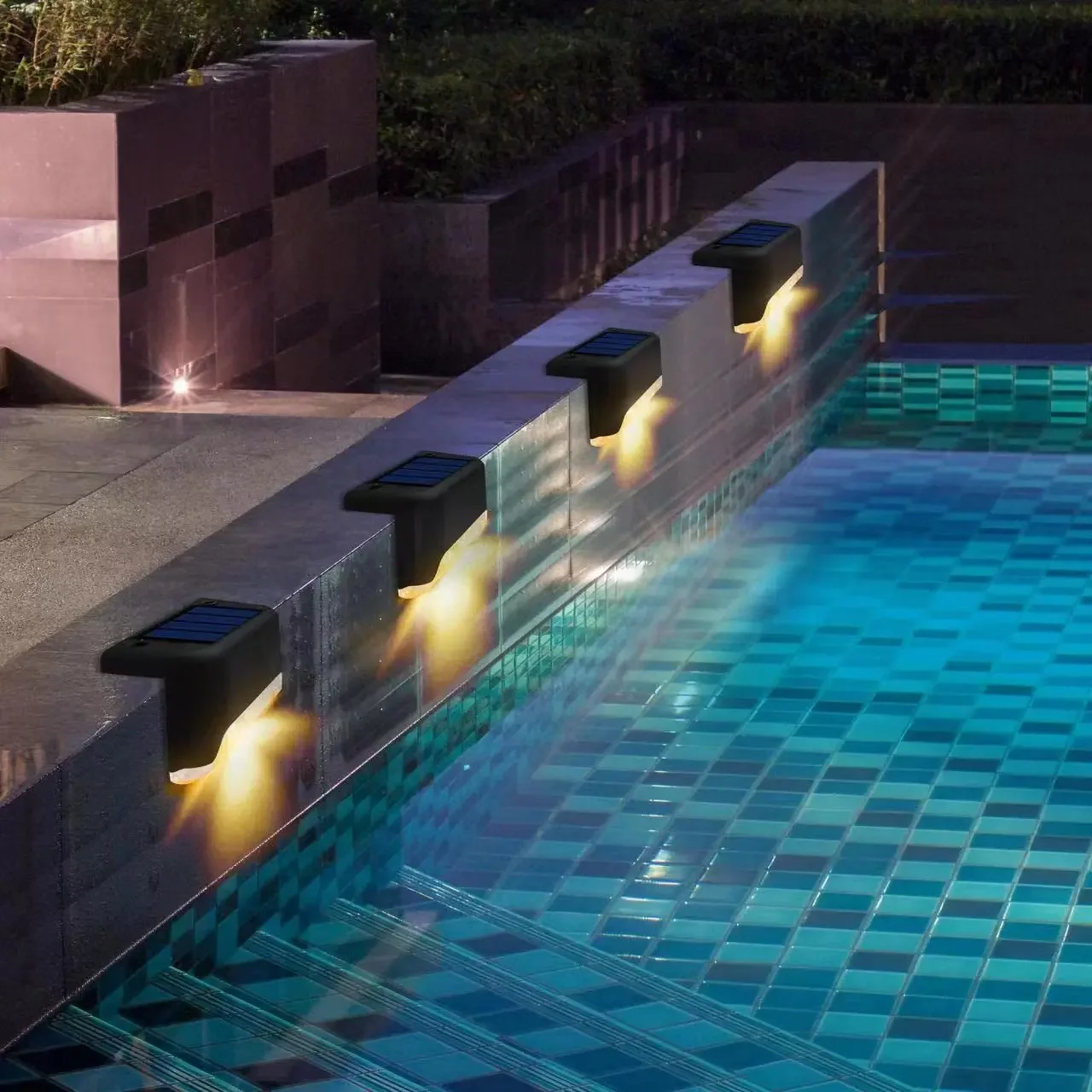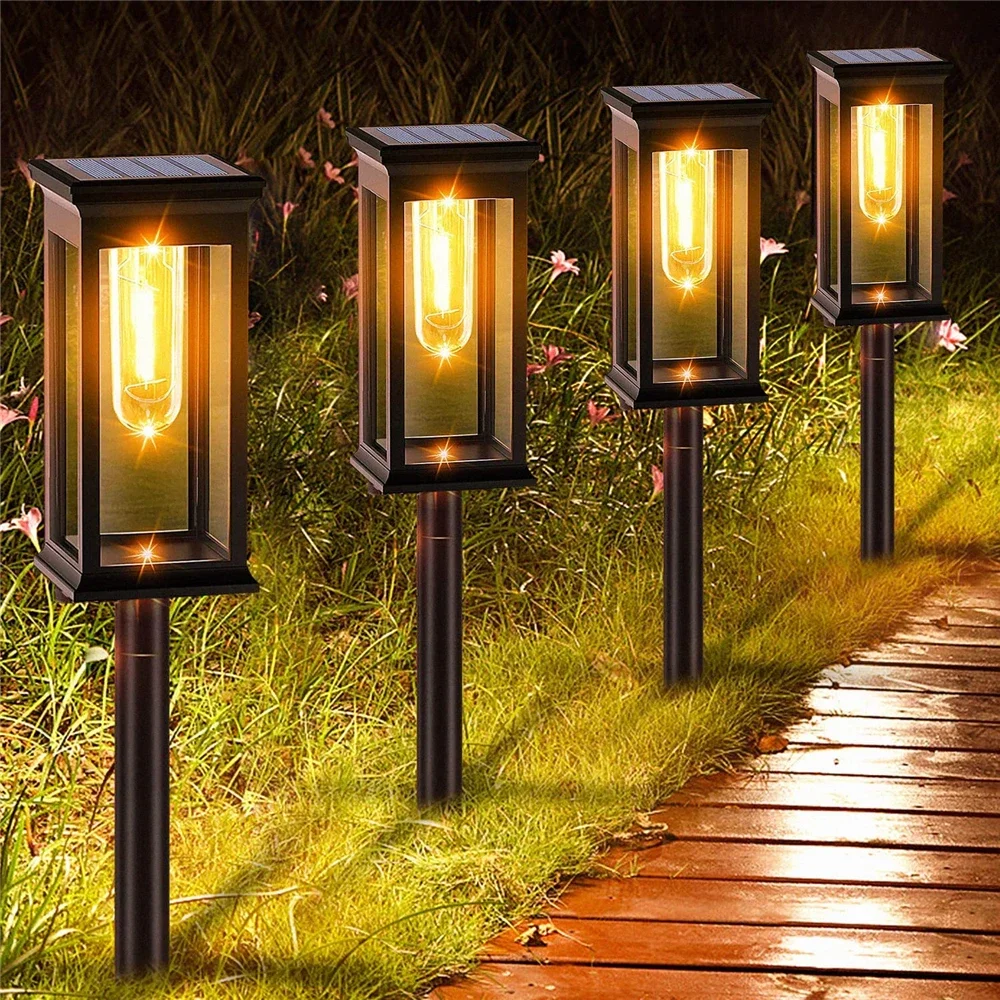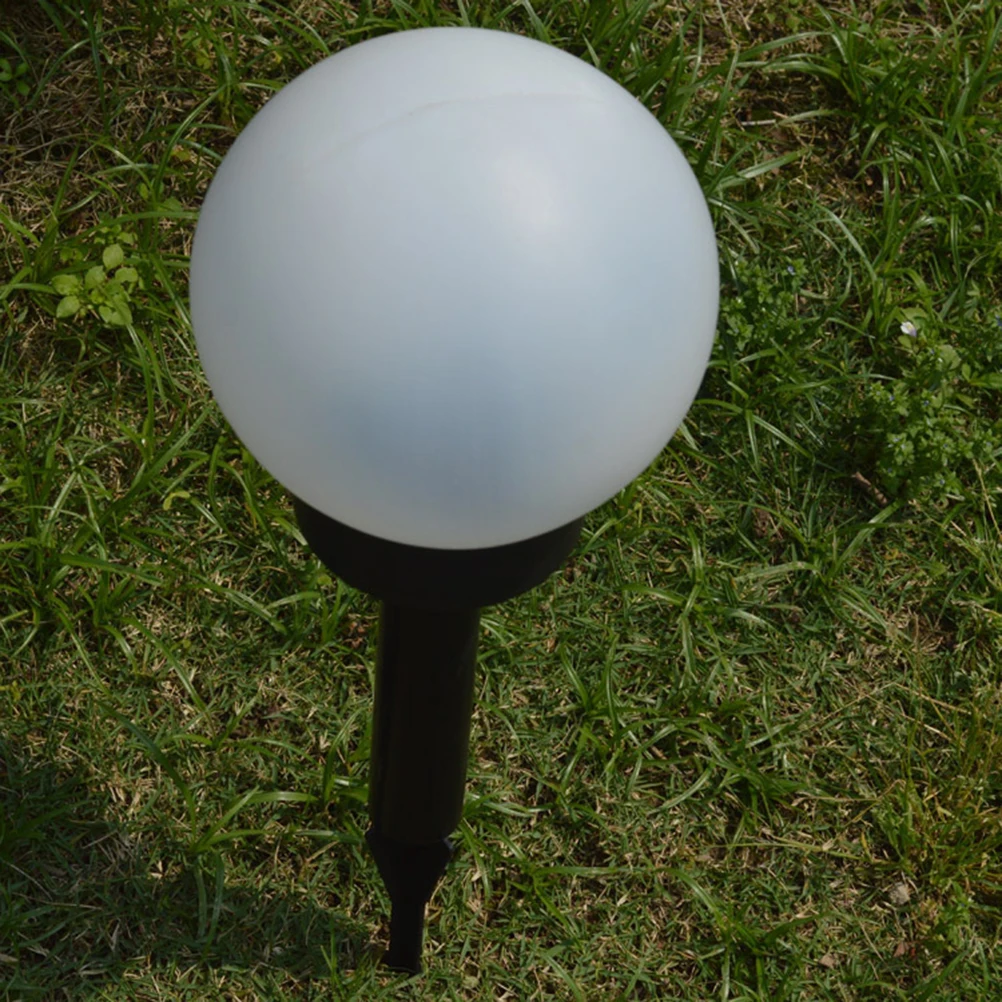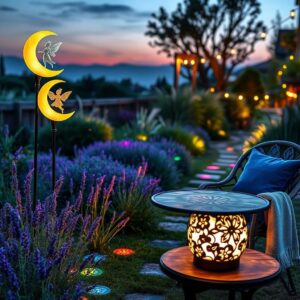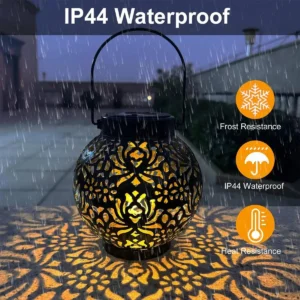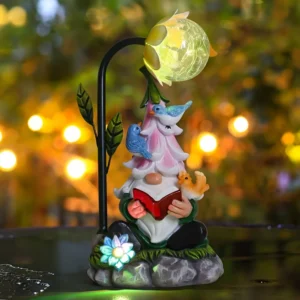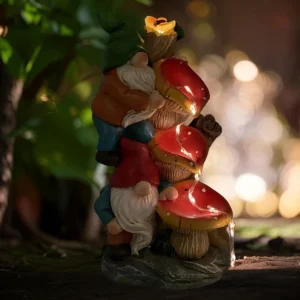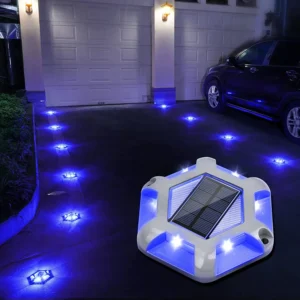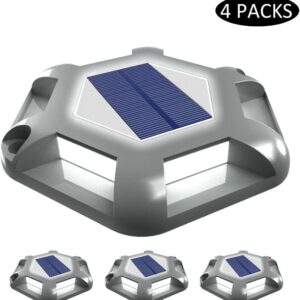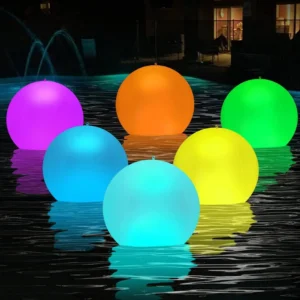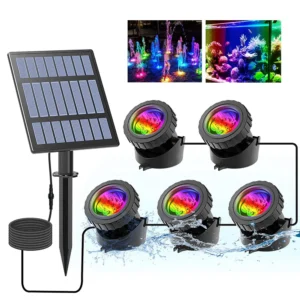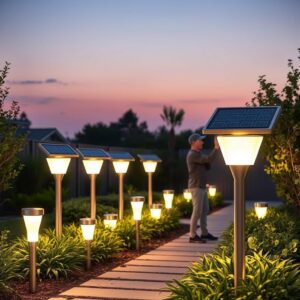Solar Iron Hanging Light – Waterproof Outdoor LED Lamp
Understanding the Lifespan of Solar Lights
How long do solar lights last? It’s a practical—and pretty important—question, whether you’re dreaming about your first dusk-glowing walkway or looking to keep your backyard twinkling for years to come. In the simplest terms, “lifespan” for solar lights means the stretch of time your lights will shine reliably, soaking in daylight and turning it into nighttime glow, before they need a little more than routine TLC.
For most outdoor solar lights, you can expect a typical working range of 2 to 6 years. Some stubbornly sunny models and well-cared-for fixtures stretch this out even longer—up to a decade with a bit of luck and a lot of good care (source). But why the spread? It comes down to the trio of battery, panel, and the overall build. Your solar garden lights work thanks to rechargeable batteries (usually sealed inside), solar panels perched on top, and all sorts of wiring hidden in weatherproof packaging. Everything starts strong, but, like your favorite pair of boots, outdoor life eventually wears them down.
Let’s get tactical: The battery is usually the first piece to tire out—after about 1–2 years on average, it’ll hold less charge, and your sparkling trail might grow dimmer. Panels are tougher, designed to withstand years of sunshine and rain, but dust, fallen leaves, and icy winters can gradually curb their performance. Housing and electronics have their own limits, too, especially if you live where summer bakes and winter chills are equally dramatic.
But there’s good news: If you keep your lights clean and in a prime sun-catching spot, you’re ahead of the game. Temperature swings matter—a midwestern deep freeze or a desert heatwave makes tougher demands on your lights than a mild, coastal climate. And settings count, too: high-brightness, motion-triggered displays drain more juice than a gentle, always-on glow. The more you ask, the harder those batteries work.
Wondering if you can squeeze more magic out of your solar setup? It’s about paying attention. Wipe off panels so they catch every bit of sun, check placement to avoid rogue shadows, and swap out tired batteries when dusk gets dreary. Do this, and those solar lights will keep turning your garden into a storybook scene night after night—for seasons, not just weeks.
Resin Elf Reading Solar Lights for Garden Patio Decoration
Environmental and Climatic Impact on Solar Light Longevity
Ever wondered why one set of solar lights twinkles on for years while another fades after a single season? It’s not just luck—your local weather and climate play a massive role in how long solar lights last. Understanding these environmental impacts lets you outsmart the elements and get the most out of those pockets of light in your garden or yard.
How Weather Affects Performance
Solar lights live outside all day, basking in whatever Mother Nature throws their way. Sunlight is their lifeblood, but too much of a good thing comes with tradeoffs. Prolonged UV exposure can slowly break down plastic housings and cloud up solar panels, making your lights less efficient at soaking up every ray. On the flip side, if your area is notorious for cloudy days, your lights might not get a full “charge” and you’ll see shorter run times after dark.
When it comes to temperature swings, extremes on either end test your solar lights’ resilience. Scorching summers can cause battery and electronic components to degrade faster, while freezing nights may sap the battery’s power or even prevent a full charge. Humidity is another sneaky culprit—moisture can creep into poorly sealed lights, leading to corrosion or electrical glitches. Torrential rain and heavy snow test the waterproofing seals. Good-quality solar lights can handle most conditions, but repeated exposure to harsh weather ultimately wears down even the sturdiest models.
Solar Lights in Winter and Cloudy Regions
Here’s the big question: Can solar lights actually shine when the days are shorter, the nights are colder, and the sky’s often overcast? There’s a bit of myth-busting to do here. While it’s true that reduced sunlight in the winter and frequent cloud cover limit charging hours, most solar lights are built to gather energy even on dull days—just less efficiently than on sunny ones.
In reality, your lights won’t vanish the moment autumn rolls in. Expect them to glow for fewer hours after sunset during winter months, but not disappear altogether. If you live somewhere with deep winters or constant overcast, it’s a smart move to clean off snow, dirt, or debris from your panels and to set your solar lights in the sunniest spots your garden offers—even if that means moving them as seasons change. Some homeowners bring lights in for the harshest months and redeploy them as spring returns.
To optimize solar light performance when sunshine is scarce:
- Angle the panels to catch the most direct light available.
- Clear off snow, frost, and leaves regularly.
- Use energy-saving modes or dimmer settings if your lights offer them—this conserves power for longer glow times.
Bottom line: With a little savvy and occasional repositioning, solar lights can still bring a spark of magic to winter landscapes and shady corners. Just keep expectations realistic—less sun means less run-time, but not total darkness. Your garden’s glow ebbs and flows with the seasons, much like the sun itself.
Solar Stake Light – Star Christmas Tree Snowflake for Garden Decor
Technological Innovations in Solar Lighting (2024)
Advances in Solar Panels
Let’s keep it simple. The biggest leap forward in 2024? Solar panels themselves. Standard silicon panels have been the norm, but this year, perovskite solar cells are making serious waves. What does that mean for your garden path or patio lanterns? In plain terms: higher efficiency, lower losses, and the ability to soak up power even when the clouds roll in. With perovskite, solar lights capture more sunlight, even in the weak, silvery hours of winter. That translates to more hours of warm glow at night, even if daylight is scarce.
But durability matters, too. New weather-resistant coatings now shield panels from pounding summer sun, bitter frost, or just relentless rain. Picture your garden lanterns taking on all four seasons—these new protective layers mean fewer cracks, longer lifespan, and less cleaning for you. Not a bad trade.
Are all the changes game-changers? Not quite. Some incremental updates—anti-reflection coatings, lighter frames, slimmer panel profiles—won’t steal headlines, but they extend lifespan and keep your solar lights quietly working, night after night.
Improvements in Solar Batteries
The heart of any solar light is its battery, and this is another spot where 2024 shines. Out with old nickel-cadmium, in with lithium iron phosphate (LiFePO₄) batteries. Why care? These power cells charge up faster, last longer, and don’t fade after a year or two. With typical use, you’re looking at three to five years—sometimes even seven—before you even think about swapping a battery.
Lithium iron phosphate batteries are also lighter on the planet. They contain fewer toxic elements and need less frequent replacement, which cuts down on waste over the years. No extra maintenance tricks—just a power cell that quietly does its job, reliable and spartan.
For the casual gardener, this means fewer late-night fiddles with dead lights. For the eco-conscious, it’s a win for sustainability. And for everyone: you get more evenings on the patio, more starlit backyard strolls, all thanks to tech that, for once, asks almost nothing from you.
If you’re wondering whether it’s worth upgrading your old solar lights or choosing new ones, these advances—smarter panels and better batteries—mean your next string of lanterns or path lights might just outlast your favorite pair of boots. And that’s exactly the kind of practical magic we could all use.
Set of 4 | Solar Deck Light | Solar-Powered Outdoor Illumination
Essential Solar Light Maintenance Tips
Outdoor Solar Light Care Routines
Keeping your solar lights casting that steady golden glow through the years? It’s simpler than you think, and it all starts with a bit of outdoor TLC. Picture this: your garden waking up each night, lanterns and pathway stakes sipping sunlight by day and spilling warm light at twilight. That kind of consistency relies on regular, low-key care.
First, give those solar panels a gentle clean every few weeks. Dust, pollen, and bird droppings may seem harmless, but they act like mini sunshades, blocking rays and sapping your lights of their sparkle. Use a soft cloth and a splash of soapy water—no special gadgets needed. Wipe away debris, rinse with clean water, and your panels are ready to drink in the sun. If you live in an area prone to heavy pollen or dust storms, you might want to check panels more frequently—think of it as helping your lights catch every precious ray.
Placement is another quiet hero here. Make sure your solar lights have a clear shot at the sun. Overhanging branches, thick shrubs, or even the slow creep of garden growth can cast sneaky shadows, trimming precious minutes from your nightly light show. Every autumn and spring, take a few minutes to trim back greenery or shift your lights to brighter spots—imagine rearranging your seats for the best view at your garden’s evening performance.
Regular Checks and Troubleshooting
You don’t need to be an expert to know when your solar lights need a little tune-up. Watch for changes in brightness, especially if your once-vivid path lights are now softly glowing or flickering out early. Dimming, shorter run times, or lights that won’t switch on at all are friendly reminders to look closer.
Start simple: check if the panels are clean, then peek at where they’re placed. Next, check battery access. Outdoor batteries do a lot of heavy lifting, so they’ll eventually fade. Most solar light batteries last 1–2 years—replace them if you notice lackluster behavior, and your display should perk right back up.
Some fixes are as basic as toggling the on/off switch, ensuring fixtures are tightly closed against rain, or straightening out any misaligned stakes. If panels or bulbs show cracks, moisture, or corrosion, it might be time for a replacement—every good garden performance deserves a reliable cast.
Bottom line? A handful of mindful habits—gentle cleaning, smart placement, and the occasional check-in—keeps your solar lights bright year after year. That means more nights basking in that effortless, sun-powered glow.
Solar Dwarf Statue Light – Outdoor Garden Gnome With Illumination
Solar Battery Replacement: When and How
Signs Your Battery Needs Replacing
Here’s the truth: even the most diligent garden guardian will eventually face solar lights that fade, flicker, or simply bow out before midnight. It’s not a failure—it’s just time for a little tune-up. But how do you know when it’s your solar light’s battery asking for retirement?
First, watch for diminished brightness. If your once-vivid path is now aglow with something closer to a candle’s flicker, the battery may be on its last legs. Reduced runtime is another give-away. A solar light that once carried you well into the night but now quits after a couple of hours is waving a red flag. And the biggest sign? When your lights just stop holding a charge overnight—even after a full, sunny day. If you’ve already checked for panel obstructions, cleaned away dirt, and given the unit a full day to soak up rays, then chances are the battery inside has simply completed its natural cycle.
Steps for Safe Battery Replacement
Swapping out a solar light battery isn’t rocket science, but there’s a rhythm to doing it right—and doing it safely. First, identify the battery type. Most modern solar garden lights use either NiMH (nickel-metal hydride), NiCd (nickel-cadmium), or, increasingly, lithium-ion or lithium iron phosphate cells for longer life and better performance. You can check the battery compartment, usually tucked under the light’s housing or beneath a small access screw at the base. The exact type and voltage should be printed on the cell.
Now, grab a fresh battery of the same type. (Don’t be tempted by bigger batteries—stick to what the light’s designed for.) Most outdoor solar lights are built for an easy change: unscrew or pop open the battery cover, remove the old battery, and slot in the new one, matching polarity marks (+/-). Snap or screw everything back together securely—no need for special tools.
How often should you do this? Plan on a new battery every 1–2 years, give or take, especially if your winters are harsh or your lights work hard through long nights. Mark your calendar if you want to keep that garden glow steady year-round.
And remember the eco-friendly part: never toss old batteries in the trash. Take depleted cells to your local battery recycling facility or a drop-off point at a home improvement store. This quick step means fewer heavy metals in landfills and a little less harm to the planet, so your solar lights don’t just shine on your garden—but on your conscience, too.
Warm White Solar Pathway Lights – Waterproof Garden Lighting
Sustainability and Eco-Friendly Solar Lighting
Benefits of Longer Solar Light Lifespans
Let’s strip it down: every extra year your solar lights last, you’re saving money, hassle, and helping the planet breathe a little easier. When you buy fewer replacements, that means less waste piling up, and a smaller carbon footprint from manufacturing and shipping. It’s not just about dodging another trip to the store—long-lasting solar lights keep plastic, metal, glass, and batteries out of the landfill longer. If your solar lantern glows steady for six seasons, that’s fewer busted lights headed for the bin, and more evenings spent outdoors under the same gentle beam.
Longer life also means less demand for new materials, cutting the resources and energy tied up in production. Modern solar lights—especially those built to last—are ticking more eco-friendly boxes each year. Fewer replacements = lower overall emissions. And while solar lights already skip the coal-fired grid every night, making those lights last amplifies the good they do.
Choosing Green: What to Look For
If you’re in for the long haul, pay attention to how your next solar fixture is made. Look for products with recycled or recyclable materials, or ones that come stamped with environmental certifications. Some manufacturers skip single-use plastics, use sustainable metals, or package lights with less waste. It’s one of those features you don’t notice at first, but it pays off with every trip to the curb you don’t make.
Certifications matter too—seek out solar lights labeled as RoHS (Restriction of Hazardous Substances) or with other established eco-standards. These little marks show the maker cares about what goes into the product, and what happens when it’s time for it to go out.
End-of-life disposal is the final step most people skip. Be that person who checks how to recycle spent batteries and old solar gear. Many local recycling centers have spots for used rechargeable batteries and small electronics. If your light really is at the end of its story, giving it a proper sendoff keeps toxic stuff out of the soil and new resources in the loop.
Go for lights that last, made the right way, and you’ll make your garden a little greener, in more ways than one.
Solar Lanterns LED Outdoor Garden Yard Decoration
Solar Lighting FAQ: Longevity & Maintenance
Frequently Asked Questions
How long do solar lights last and what affects their longevity?
Most solar lights will give you a steady glow for two to six years, but with a bit of luck and some simple care, they can last even longer—sometimes up to a decade. What’s the secret? Quality matters. Higher-end solar lights built with durable housing, efficient batteries, and sturdy panels will outlast bargain-bin picks. Other factors: wild weather—like searing heat or freezing winters—can wear lights out faster. And if your lights are on the brightest setting every night, expect a shorter lifespan than dim, gentle lighting.
Can solar lights work in winter or shaded locations?
Absolutely. Even on cloudy days, solar lights soak up some energy, though you may get shorter runtimes as winter days grow short. In shadier spots or cloudy regions, just opt for lights with high-quality, efficient panels—look for monocrystalline or new perovskite options in 2024. Give them as much daylight as you can, and if possible, shift solar lights to sunnier locations during the darker months for evening sparkle.
How often should solar light batteries be replaced?
Batteries are the engine of solar lighting. Most need replacing every one to two years (sometimes sooner if your lights are dimming or not lasting the night). Modern lithium iron phosphate batteries outlast old-style ones, so consider those for less hassle and longer glow.
What are the most common maintenance tips?
Keep it simple: wipe panels clean every few weeks. A soft cloth keeps dust, pollen, and leaf bits from blocking sunlight. Check for overgrown plants shading your lights, and make sure nothing is covering the panels. Swap batteries if you notice weaker brightness or if they quit early. That’s all it takes to keep the glow going strong.
Which new solar technologies can I consider in 2024?
This year is all about efficiency. Look for solar lights with perovskite panels—they drink in sunlight even on cloudy days. New lithium iron phosphate batteries hold power longer and charge faster, making maintenance easier and extending lifespans without any extra effort.
Quick Troubleshooting Guide
What to do if your solar lights stop working:
- First, clean the solar panel—dust or grime is often the culprit.
- Make sure the light is switched on and in a sunny spot.
- Check batteries and replace them if they’re old or corroded.
- Inspect for loose wiring or a worn-out LED bulb.
Still no luck? Most brands offer affordable replacement parts, and you can find DIY repair guides online—no need to bin your eco-friendly investment at the first sign of trouble.
Need more help? Local garden centers and online forums are full of advice and fellow solar lighting enthusiasts willing to lend a hand. With a little routine care and these solar light installation tips in mind, your garden’s glow can stretch on far longer than you might expect.

